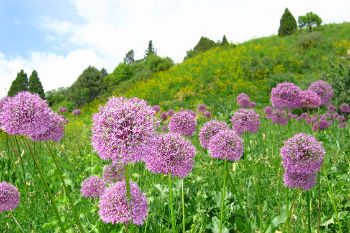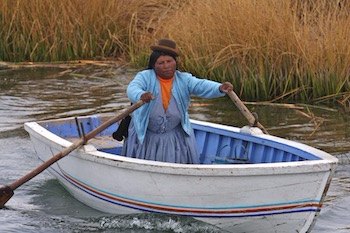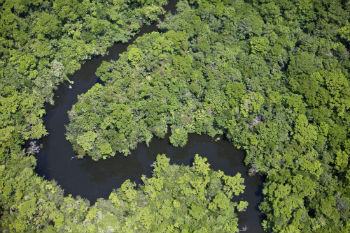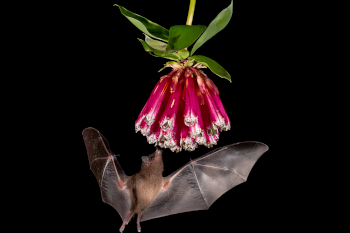Main menu
CEPF is a joint initiative of l’Agence Française de Développement, Conservation International, the European Union, Fondation Hans Wilsdorf, the Global Environment Facility, the Government of Canada, the Government of Japan and the World Bank. A fundamental goal is to ensure civil society is engaged in biodiversity conservation.
Visitez le site français コア情報の日本語翻訳を読むOr use Google Translate to translate the English site to your language:
GTranslate
Using Media and Conservation Education to Enhance Public Awareness of Environmental Protection and Sustainable Livelihoods
30 August 2013
30 August 2013
Within the interior rainforest on the small Caribbean island of St. Vincent, the Kamacrabou watershed provides essential water and soil maintenance for Diamond Village, a small farming community with a population of approximately 500. The Organization of Eastern Caribbean States reports that “deforestation is one of the major impacts to the current use of the watershed and has resulted in landslides, soil erosion, flash floods, and sedimentation of streams, loss in biodiversity, disruption of microclimate and contamination of water quality.”
To establish a balance between environmental protection of the watershed and sustainable livelihoods, the Diamond Village Community Heritage Organization, with support from CEPF, aimed to develop and market a new ecotourism site and enhance and maintain the biodiversity of the watershed area. Between September 2012 and June 2013, the organization built a 2.5 mile forest trail to the Bubby Stone ecotourism site – a rock pile located 2,500 feet above sea level – and reforested 1 acre of land around the trail.
There are several important cultural and environmental sites along the Bubby Stone Trail, including a former arrowroot mill, the Diamond Village water catchment, a natural spring and the Forestry Department’s plantation forest. The area is also home to numerous species, including three on the IUCN Red List of threatened species, the St. Vincent parrot (Amazona guildingii), the St. Vincent blacksnake (Chironius vincenti) and the Lesser Antillean whistling frog (Eleutherodactylus johnstonei).
Challenges
- Ensuring the sustained protection of the watershed – A public awareness campaign was developed to involve and educate the local community in environmental protection issues. With the help of the Forestry Department and Central Water and Sewage Authority (CWSA), an environmental conservation workshop was held for a cross section of the local community. During this, the CWSA helped instruct farmers on environmental conservation efforts. Public awareness sessions were also held within the village for all community members to attend.
The challenge moving forward is to maintain the trail through community involvement without a known source of funds for operations. The government donated a site to be used as an office from which the Diamond Village Community Heritage Organization will coordinate activities, including working with the Forestry Division to determine if user fees should be implemented on the trail and coordinating regular public community service projects to maintain the cleanliness of the trail and its surrounding community.
Keys to Success
- Using media to attract visitors and tourists to Diamond Village and the Bubby Stone Trail – The Bubby Stone Trail opening was April 11, with more than 200 people in attendance. Multiple newspaper articles documented the opening of the trail, and since then several groups from outside the district have visited the trail and many larger groups have inquired about tours. Through the media, the Bubby Stone Trail was recognized nationally as the most recent ecotourism site in St. Vincent and the Grenadines. A brochure was also created to detail the importance of the trail.
During the opening ceremony, the Ministry of Tourism representative Jay Belmar encouraged Vincentians to explore the trail and experience genuine ecotourism and nature, but also to take care of the natural area there. “If you damage it, there will be nothing left for the future generations,” she said. The continued education for the community on environmental protection will be the key to maintaining the trail and preventing damage from frequent use and large visitation. - Creating livelihood opportunities for Diamond Village community members – The Diamond Village Community Heritage Organization trained 10 villagers in culinary arts, focusing on the preparation of local dishes using local produce to be sold at the Bubby Stone Trail. In addition, a card advertising catering services by those who participated in the culinary arts training program was created. One of the culinary arts trainees is now operating a restaurant and the others continue to sell food within the community.
According to Project Manager Simeon Greene, “What we are trying to do with this project is try to find the very fine line between environmental protection and livelihoods for the community. We hope that the transformation of the Kamacrabou Mountains and Bubby Stone can help people in the community make a living.” With the trail enhancing livelihood opportunities for community members as well as the farmers who grow the food, the hope is that the community will want to continue to preserve the trail and the surrounding rainforest.
Minister of Agriculture and constituency representative Saboto Caesar stressed that the site should not be viewed only as a beautiful attraction, but also as a path to sustainable and viable productivity in communities to enable growth. He noted that the government will continue to work with the Diamond Village Community Heritage Organization to encourage other groups to conduct similar projects. - Managing a small grant and catalyzing impacts – The success of the Bubby Stone Trail project demonstrates the huge impact that a small grant can have on communities at a national level. The Diamond Village Community Heritage Organization was able to build and maintain partnerships between public, private and community organizations and link the project areas of intervention with previous projects to increase the impact. For example, the Forestry Division had already intervened in the project area in 1998 by reforesting 5 acres of land previously cleared for farming. During the CEPF-funded project, the Forestry Division offered technical advice and contributed to success by providing training and labor during the trail building and reforestation. The Forestry Department will also tend to the reforested land following the CEPF-funded project completion by keeping a crew of at least two men in the watershed on a permanent basis.
During the opening of the Bubby Stone Trail, Senior Forestry Supervisor Cornelius Richards described the project as a living manifestation of what can take place when the community works with the government, noting that the partnership between the Diamond Village Community Heritage Organization and the St. Vincent and the Grenadines government is the most successful of its kind so far.
About
Ecotourism and Biodiversity Protection Project for the Kamacrabou Mountain and Diamond Village Community
Purpose: Create a nature trail to preserve the natural environment and increase economic opportunities for the Diamond Village community through the development of ecotourism activities. Reforest the Kamacrabou watershed area in St. Vincent to ensure proper conservation of soil and water, and raise public awareness on the importance of forest conservation and conservation practices.
View the final project completion report.
Grantee
The Diamond Village Community Heritage Organization was founded in the late 1990s by members of the Diamond village community, a rural, banana-farming community in the northeastern part of St. Vincent and the Grenadines. The organization was formed as a direct response to the downfall of the banana industry, aiming to address increased levels of unemployment and underemployment through the development of alternative means of livelihoods and ecotourism ventures. The organization also aims to preserve the community’s history and culture.
Contact: Simeon Greene, project manager






